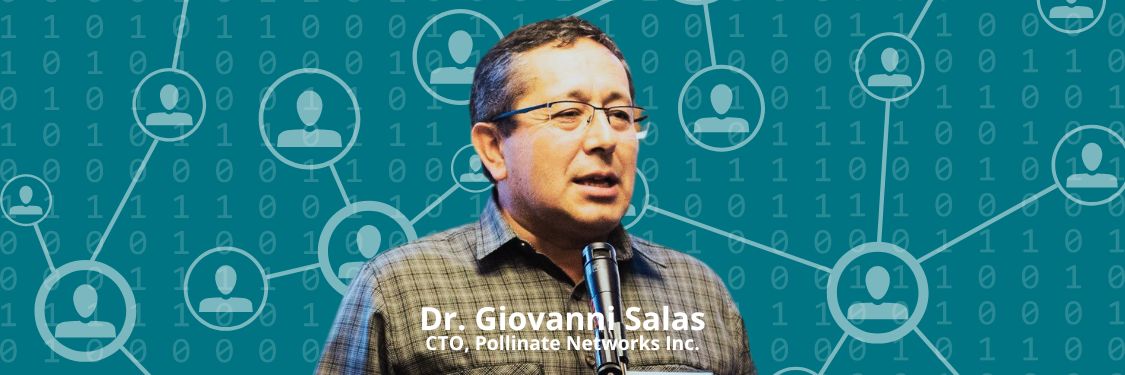
Mentoring fosters fairness, goodwill and healthy new norms at work
Preparing employees to return to the office post-pandemic is shaping up to be a tricky, unenviable task that is fraught with complexity. Almost no employee wants to return to the office full time and almost no one will do so, putting pressure on leaders to get their hybrid work models right or face consequences that may range from lost productivity to a wave of resignations.
A sense of fairness is essential for return-to-office productivity
Pollinate Network’s expert on workplace conflict, Crista Renner, tells us that almost all workplace conflict and complaints come from a perceived lack of fairness. Dr. David Rock and other motivational experts say that fairness, or rather lack of it, is an element that affects the brain like a life or death situation, putting people into fight or flight mode. The last thing leaders need is a powder keg situation lit by people who feel like they’re being – or are going to be – treated unfairly in a hybrid work situation, and that others are getting better opportunities or more of their preferences met.
Goodwill can buffer difficult transitions
We know from research that people get meaner if they only interact online. And the pandemic has been a stressful time for us all. Where is the level of goodwill that people have for each other right now?
If you want to set up the hybrid work model right the first time you need to understand the “goodwill factor,” which is how much goodwill people have for each other right now, at this moment. Not in general, not in the “before times”, but at this moment of transition. Are there some upset apple carts to put right as people return to the office? Cultivating goodwill is one of the only reliable ways to make a transition go well, because things are going to go wrong. Do employees have enough emotional bandwidth to use as a buffer when things start to rub? How do you know?
Maintaining positive new norms
Most organizations have also worked hard over the past two years to make gains in adopting new and better diversity and inclusion behaviours, as well as guarding mental health and implementing more sustainable practices. How do we keep those gains we made on positive new norms as we move to the next normal?
Leaders: if you really want to do effective team building and help people transition in the return to the office and beyond, then improve your mentorship skills! I often say mentoring is the Swiss Army knife of organizational strategy. Putting people together in pairs and small groups is a way to focus efforts, raise engagement and keep knowledge moving.
How can mentorship ease the return-to-the-office transition?
First, good mentors know, understand and work with motivational styles.
Each individual’s core motivations shape their behaviours and desires. Everyone has different needs for factors like influence, relationships, coherence (understanding big picture outcomes) and achievement.
What is fair to one person may not be fair to another – which is what makes it so hard to balance everyone’s needs. If you have a picture of the motivations that drive each individual, then you have a place to begin to negotiate the total picture of what can work for each team member. (If you continue to work against the motivational stream then you are in for a lot of resistance and complaints.)
Need help understanding what motivates your team? Pollinate’s Knowledge Transfer Index psychometric assessment reveals how individuals work and learn best together – in person or virtually.
Mentorship powers productivity
Mentorship combines two powerful productivity drivers: it is a learning system that allows knowledge and advice to flow from those who have it to those who need it, and it is a social support system that connects people to an organization and across an organization.
A mentoring approach enables you to provide both knowledge transfer and social support during change, without adding extra demands. Want your younger workers to stick around? Do you want those learnings from the pandemic to stick? Then you have to have constant learning and growth opportunities available as well as psychological safety and support in the environment. A well-trained mentor knows that knowledge is always an exchange, it’s never one way or devoid of personality, because it’s a fully interpersonal way of operating.
Mentorship vs coaching
Mentorship is not the same as coaching although they certainly are related. A key difference is that mentoring is built around the mentees’ context. Mentors work within the mentee’s world and help them expand their context rather than asking them to move to a corporate or external agenda first. Mentors give advice, provide perspective, make connections and provide challenges.
While coaches would say they also have to work within the coachee’s context, coaching has developed, generally, to get people to adhere to something external – a performance plan, a new leadership position’s expectations. Coaches tend to focus on specific performance issues and outcomes, setting and tracking progress on an agenda.
Do you know how to get centered in someone’s context with them and build out? Or are you still trying to impose your context on them? If so, good luck! People under age 35 are especially impervious to this.
What is the #1 way to get people to feel goodwill for each other? Context sharing. If you want goodwill, you have to work with people in their context, not yours. Taking the time to understand someone’s preferences and tendencies shows care and is also strategically wise. Either through assessment or dialogue – and preferably both – can you find out what is motivating and not motivating? Their preferred first steps when trying something new? How does their brain integrate new information – do they look for similarities with the “known” or wonder about the things they don’t know?
Matching makes all the difference
And finally, don’t kid yourself, it actually really matters who is matched with whom. How you form pairs and teams to do the reintegration work will make or break the results. We’ve all been part of those work groups where there isn’t balance in terms of goals and/or style. Now is not the time to take a chance that you’ll get the groupings right.
Your pairings and groupings need to be completely in sync with the presenting reality in the organization. Your algorithm for making successful groups and pairs depends on it. The first question we at Pollinate ask is around the purpose we are driving toward. To make the team productive, we ask first to what degree people are looking for social support and to what degree they are ready to engage in knowledge transfer. For true productivity, you need both, but they can be calibrated to work best. Is it more helpful, based on what you are trying to accomplish, to put people together across a workstream or supply chain? Or are we trying to reconnect pieces of the organization that don’t get access to each other at other times?
Reintegrating staff with hybrid work schedules
Pollinate recently worked with a large Ontario municipality to create a strategy for reintegrating staff into new hybrid schedules. The leadership team knew people had been apart too long and some fresh leadership groupings to problem-solve together to find a way through reintegration would be welcomed.
We’d already seen through the KTI assessments that executive leaders had a different motivational structure, overall, than did the leaders in the next layer down. Senior leaders were attached to each cohort of leaders and asked to be the conduit for feeding back on how motivations were being stirred or left dormant. The cohorts presented best practices and then enabled each leader to create a plan unique to their own area, but tied into the overall ethos of the global plan for reintegration.
See more Pollinate Case Studies.
Explore different forms of mentorship and best practices.
Learn more about Pollinate Mentorship Programs
 Christy Pettit
Christy Pettit
Christy Pettit is Chief Executive Officer and co-founder of Pollinate Networks Inc.
For 25 years, Christy has developed new approaches and best practices for agile, effective organizations worldwide. She is an expert on matching people and organizations for applications including knowledge transfer and mentorship programs, flexible virtual and hybrid teams, and productive organizational and business ecosystems and networks.



